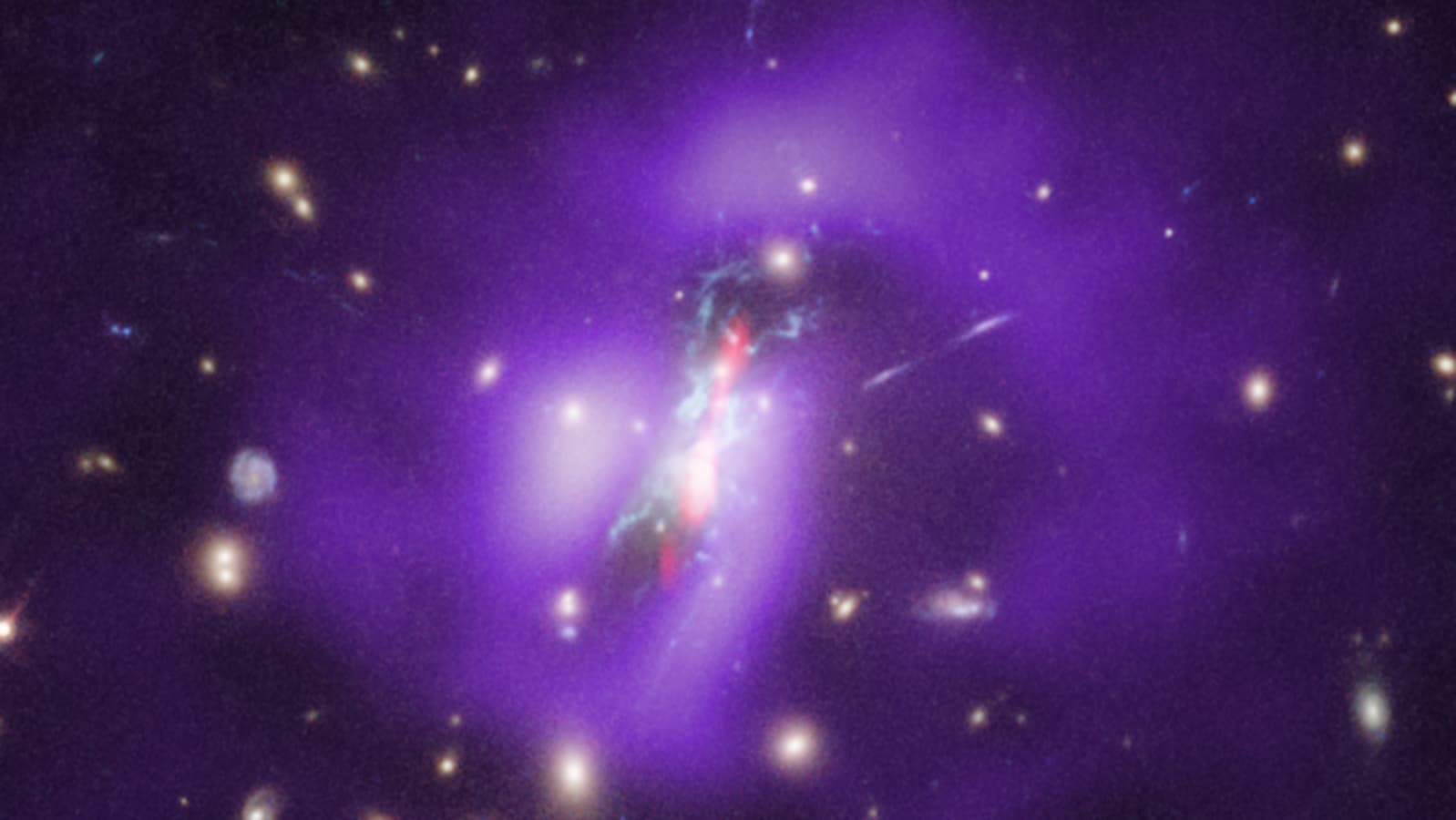This BIGGEST black hole is expanding by 60 suns every year: Hubble Space Telescope
Have you ever wondered which is the biggest black hole in the universe? NASA Hubble Space Telescope has captured it.

A Black Hole is terror incarnate. It is a massive astronomical object and not even light can escape from its grasp! Once swallowed by a black hole, the object simply disappears and that applies to light too. It leaves behind nothing but darkness. In fact, black holes cannot even be seen. They are surmised from the behaviour of objects that are around it and those that are being torn apart by the black holes. NASA says that there are Stellar-mass black holes that are so massive that they are three to dozens of the Sun's mass. But what is the biggest black hole ever discovered in the universe? NASA tells! Know everything about this biggest black hole.
The Phoenix Cluster
It is located within the Phoenix galaxy cluster around 8.5 billion light years away. NASA shared that the Phoenix galaxy cluster contains this first confirmed supermassive black hole. Earlier, NASA had also shared an image of this Phoenix Cluster captured by combining data from Chandra, Hubble telescope and the Very Large Array (VLA) radio telescope.
How big is this massive black hole? It is even more massive than some galaxies. The black hole's mass is 100 billion times larger than the sun, says World Atlas. The Phoenix Cluster system has several distinctive features that help to narrate the story of its unusually high star formation. NASA mentioned that the data from NASA's Chandra X-ray Observatory depicted the coolest gas which is located near the centre of the cluster. Scientists believe that due to the absence of a significant source of heat, the cooling process occurs at the highest possible rates in the centre of the cluster.
The Hubble Space Telescope provides further evidence for the cooling of gas near the centre of the Phoenix Cluster. “Ten billion solar masses of cooler gas are located along filaments to the north and south of the black hole, which likely originate from outbursts by the supermassive black hole located in the centre of the image,” NASA said. The outburst generated jets in the outward direction and create bubbles in the hot gas that pervades the cluster.
A World Atlas report mentioned that this massive black hole of Phoenix A was likely formed from the collision of multiple supermassive black holes. Worryingly, the black hole is still absorbing vast amounts of material and its mass is increasing by 60 suns every year!
Catch all the Latest Tech News, Mobile News, Laptop News, Gaming news, Wearables News , How To News, also keep up with us on Whatsapp channel,Twitter, Facebook, Google News, and Instagram. For our latest videos, subscribe to our YouTube channel.





























